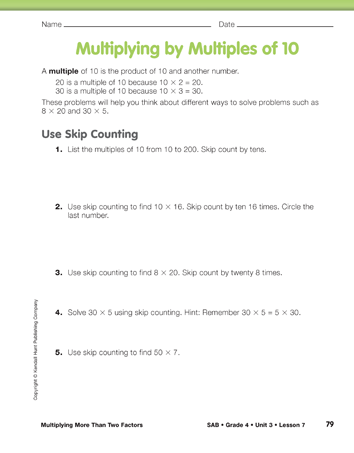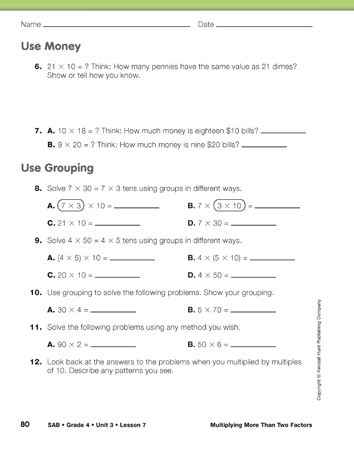Multiplying More Than Two Factors
Est. Class Sessions: 1Developing the Lesson
Part 2: Multiplying by Multiples of 10
Use Skip Counting, Money, and Grouping. The Multiplying by Multiples of 10 pages in the Student Activity Book use the skills practiced in Part 1 to develop strategies for multiplying numbers by multiples of 10 in preparation for multiplication of two-digit numbers.
Review the definition of multiples of 10 that is given at the top of the page so that students understand the goal of the pages. Then, encourage students to work with a partner to solve the problems in Questions 1–12. These questions review three multiplication strategies: skip counting, money, and grouping.
Then ask:
Then discuss the patterns students see in their answers when they multiply by multiples of 10 (Question 12). Students will likely express the patterns by giving examples such as:
“For 90 × 2, just multiply the 9 and 2 to get 18 and then just add a 0.”
“Multiply the first digit in the multiple of 10 by the other number, then add a 0.”
Ask students to think for a minute about why they can add a zero:













